Fawn Sketch Drawing Tutorial with Graphite

In this sketch drawing tutorial, we create a drawing of a fawn using Faber Castell's Graphite Sketch Pencil Set along with a variety of drawing accessories. This pencil set includes pencils 2H,HB,B,2B,4B,6B, a dust-free vinyl eraser and a sharpener.
Sketch Inspiration

Ideas for artwork can come from anywhere at anytime if you are open to them. I came across this photo of a fawn abandoned in the woods by its mother and then rescued by a hiker, recorded in the Boothbay Police report on my Facebook feed one morning. I had been wanting to draw a deer for a long time, but I knew that being able to take my own photo of a good one was highly unlikely. I thought that the intimate setting and texture of the grassy brush in this photo would translate well into an interesting and fun graphite drawing.
Tools of the Trade
Here is a collection of drawing tools and accessories that are very useful in creating graphite pencil art.

Battery Operated Eraser
A battery operated eraser offers precision and speed for cleaning up small areas on the art, and is also very effective for creating fine lines and marks.
Blending Stump
A blending stump is useful for smoothing shades or marks made by charcoal or graphite.
Vinyl Eraser
A vinyl eraser erases graphite and charcoal without leaving a mess. It is also a useful tool for creating highlights with its firm square edges.
Kneaded Eraser
A kneaded eraser is a great tool for erasing and highlight rendering, which is a technique for lifting and lightening charcoal or graphite, helping to create a range of unique tones, highlights and marks.
Cotton Ball & Q-Tip
Cotton balls and Q-tips are useful tools for delicately blending areas of charcoal and graphite.
Hand Sharpener
Faber Castell offers a variety of the best pencil sharpeners available.
Sandpaper Pad/Tissue Paper
A sandpaper pad is used for sharpening pencils and creating graphite and charcoal dust for blending.
Fan Brush
A fan brush is used for the delicate blending and softening of graphite.
Tips for Using Graphite
– Before you begin your project, become familiar with the pencils and the range of hardness and tone that each produces. One way to do this is to create your own tonal value scale by coloring from light to dark with each pencil. This is a very valuable exercise that will demonstrate the many values that each pencil is capable of.
– Protect your work by wearing a glove or keeping a protective piece of paper under your drawing hand.
– Keep a piece of scratch paper (the same paper as your drawing) at hand to test and experiment with the pencils and techniques as you go.
Paper
As for paper, there are a number of high quality brands to choose from offering important qualities to consider. Begin by choosing a paper relative to the subject matter of your drawing. For example, if you will be drawing something smooth, choose a smooth or hot press paper. If you will be drawing something rough, like rocks and other natural elements, choose a rough or cold press paper.
There is also the weight of the paper to consider– this determines how many layers of graphite it will hold.
Drawing paper also comes in different shades of white, which will affect the overall look and highlights of your final art.
For this artwork, I use a piece of 9 x 12 Strathmore 400 Series paper.
Drawing the Fawn

I begin the artwork by making a simple light line drawing of the fawn. I do not draw a complete outline of its body because I want to create lost edges to give the look of the fawn nestled in the grasses. I carefully size and position her leaving plenty of room for the grasses all around.

Making Graphite Dust
Using graphite dust may be one of the most effective methods/techniques for producing a successful result with your graphite drawing. Here I make my own dust by rubbing a 2B pencil against a sanding pad held at an angle. With the pencil also held at an angle, this technique will sharpen your pencil as well.

I then gently pick up the dust with a cotton ball.

Laying in the Graphite Dust
Here I begin the layers of texture by rubbing the graphite dust from the cotton ball over the entire paper with a gentle, circular motion. I keep part of the fawn just a bit lighter.

More Graphite
I add more texture and tone with another layer of graphite using the sides of 3 and 6B pencils and applying it in different directions. I continue to obscure some of the edges of the fawn with graphite.

I then use a technique called highlight rendering where I use the kneaded eraser to gently “pull out” the leaves. I create the leaves by simply reshaping the eraser and using a small part of it to press onto the paper and lift the graphite, leaving a lighter imprint. I also gently “draw” the leaf shapes with the eraser. I make some leaves more vivid with a bit of detail, and others are almost lost or very faint. I also want the image to get lighter, sketchier and unfocused as it reaches the top of the art.
I continue to work with the pencils to create shades of darkness in the background, preparing it for all of the highlighted grassy detail to come.

Using the Battery Operated Eraser
Now that my dark background is in, I start working the whole drawing by adding detail using a combination of tools and techniques. I start with the battery operated eraser and hold it at an angle, using its firm edge to draw with. I create a variety of grasses going in different directions, some long, some short, with little bits and pieces. I create depth by making some grass behind the fawn as well as some in front overlapping her.
Tip: Practice with the eraser on scrap paper to get the hang of it. Every once in a while “sharpen” its edges by pressing the end straight down on scrap paper to flatten the top thus restoring its sharp edge.

Here I bring the fawn to life with her spots. I make the spots in horizontal irregular shapes to make them look more natural. I also make them curve with her body position.

The edges of the vinyl eraser are also very effective for creating thin and straighter blades of grass.

Here I continue to work with the kneaded eraser adding more leaf imprints and subtle detail.

Blending with the stump I use the blending stump to smooth and refine small areas. This lends a nice subtle contrast to the highly textured areas.

Using a Q-TIP
The soft end of a Q-TIP comes in handy in small areas for the most delicate blending or lifting and lightening of a little graphite.

The Fan Brush
Finally, I add a subtle polishing or finishing effect with the fan brush by gently brushing over the art.

I hope that you enjoyed this tutorial. Drawing and using different techniques with graphite is fun and easy to get satisfying results with. Consider framing your art, reproducing it for note cards or posting on social media!
Download the entire tutorial, here!

